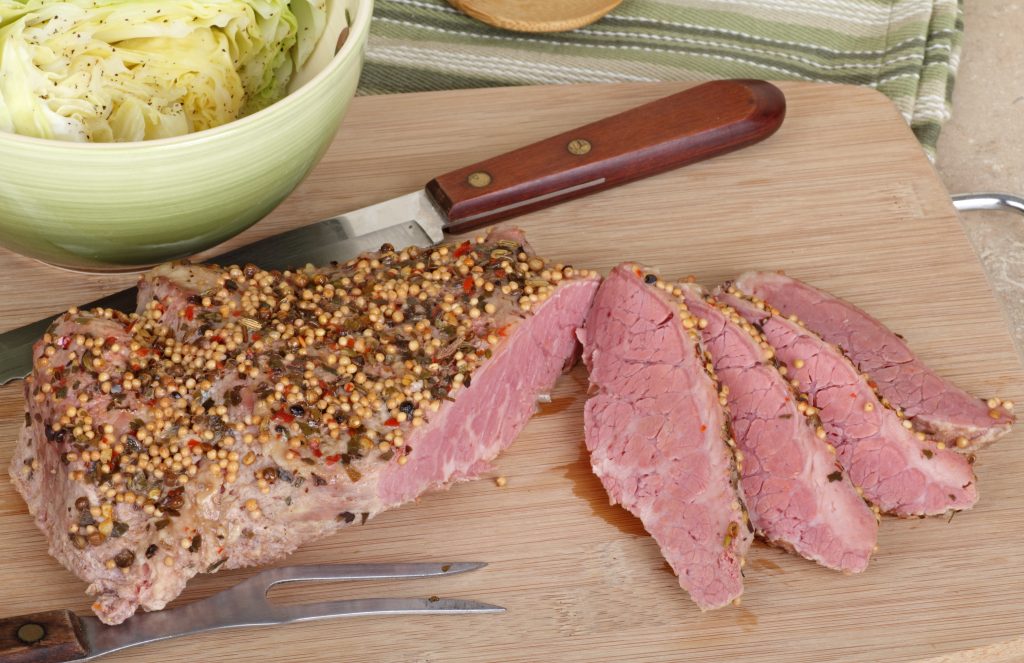Recipe of the Week: Corned Beef & Cabbage from scratch

It’s almost St. Patrick’s Day!
That means it’s time to make a homemade, healthy version of the season’s most popular food: Corned beef & cabbage!
The trick to tender, delicious corned beef, is to brine and cure the beef before cooking it. That seals in the flavor, from the garlic and pickling spice.
Brining the beef for maximum flavor takes a few days, but the flavor is definitely worth it. You want to start the process 4 – 5 days before you want to cook the brisket.
Pair the corned beef with a braised green cabbage for a most traditional Irish meal!
Corned Beef Brine and Methodology
Eastern Market Head Chef Aaron Egan
For one 10-12 lb brisket
6 quart water
1 lb salt
5 oz white sugar
3.5 oz TCM – tinted cure mix, pink salt, or Prague Powder #1 (salt with sodium nitrite)
3 cloves garlic, paste
¼ oz corned beef spice, pickling spice, or house blend
1.) Trim the brisket’s fat cap down to ¼ inch thickness. Fat doesn’t cure at the same rate as lean meat, and this will make the process of curing smoother and easier.
2.) Mix water, salt, pink salt, and sugar. Stir to dissolve – warm the water if necessary. Puree 1 pint of the brine with the garlic and pickling spices, then combine with the rest of the brine.
3.) Using a brine pump, perform a 10% (by weight) injection brining; cure covered and submerged 4-5 days, overturning daily. If you have large ziplock bags, this works well and with a greater degree of efficiency, but a hotel pan will also work.
4.) After the brining period is over, remove the brisket from the brine. Rinse the brisket under cool water, then place on towels on a sheet pan. Place it in the fridge to dry for 24 hours.
5.) Place the brisket in a pan that holds it comfortably, and add 2-4 bottles of lighter-style beer. Add enough water to just cover, and add mirepoix, pickling spices, or other flavorings as you like. Cover tightly with foil and parchment, or a lid. Bring to a boil on the stovetop, then place in a 375-degree oven to simmer for 3+ hours; the longer and slower you cook it, the better it will be.
6.) Slice and serve hot with mustard on rye, or with buttered boiled potatoes. Or, remove from the simmer and allow it to chill, whereupon it may be sliced thin and steamed to reheat for sandwiches.
Recipe adapted from Charcuterie (Ruhlman, Polcyn, 2005) and Garde Manger (Culinary Institute of America, 3rd ed.)

